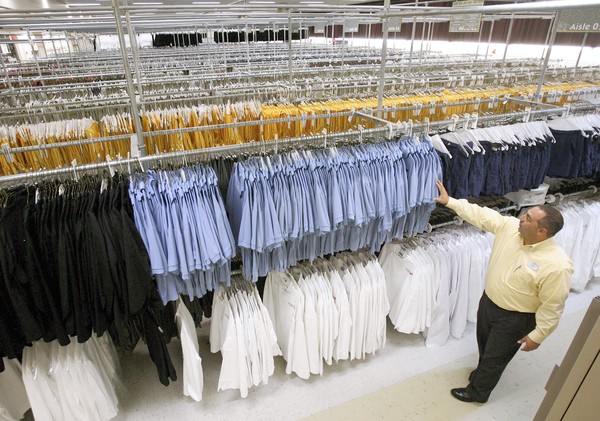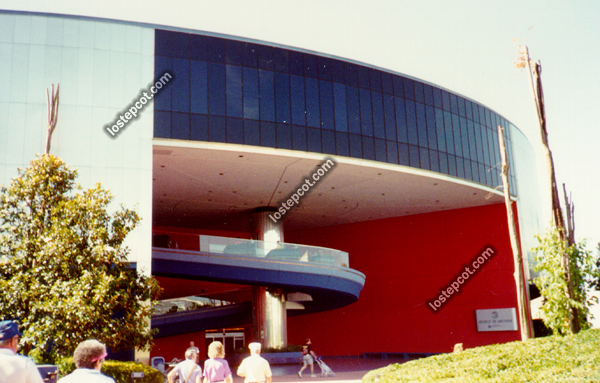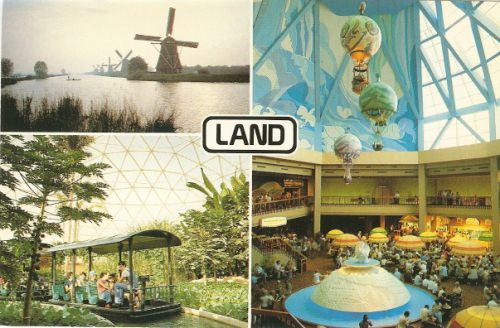 |
| See? Perfectly calm. |
So, at this point in your program you've finished the stress and the madness that is move-in day. You've probably bought everything you'll need for your apartment right away and have gotten acquainted with your roommates. The question now is... what next? The first week or so of your program will probably be an odd mix of orientations and training as you and your roommates start learning the skills for your respective roles. A lot of people aren't sure what to expect so for this post I'm going to go over the different things you'll have to go through as well as some ideas for fun stuff to do during your time off.
I Have a Free Day...
So your first day after check-in day will either be entirely free or free except for a housing meeting. The housing meeting will seem pretty standard to anyone used to living in college dorms but for those who aren't, just think of it as "101 Things You Can't Do In Housing". So, you'll have a lot of free time. What do you do?
Well, unless you're willing to shell out the cash to buy a ticket to go to one of the parks you won't be able to go there, as you don't get your cast member ID until Traditions. And no, the folks at the turnstiles won't let you in even if you show them your housing ID because they can't swipe it to record that you visited. Depending on when you have Traditions you might not be able to stay out too late either, as some sessions start very early in the morning. Starting to feel you might be bored? Never fear! Here are few suggestions on stuff to do both around housing and around the WDW area:
- Cook a "family dinner" for you and your roommates - use it as a time to bond as well as save energy for the long days of training and work ahead. If none of you really wants to cook, you can drive to one of the nearby restaurants (if you have a car) or travel to Downtown Disney/a Disney resort (if you don't) to eat out. You don't have to go too crazy buying expensive meals - eat light and fill up at home if you have to.
- Resort hop around the Disney resorts! Each one has a unique style and they're free to visit - you can take the buses if you need to because you'll have your ID at this point.
- Visit the other housing complexes! You can use the buses to get there and will be able to freely visit until 1 AM. You can also use any of the facilities in the complexes - gyms, pools, tennis and basketball courts, etc.
- Visit Downtown Disney. If you want to drop a wad of cash and don't mind that you'll miss out on the cast discount, you can pay for DisneyQuest (only do this if you really love arcades, though, as it's essentially just a huge arcade and is a bit dated). If you don't have much cash to spare, take some photos of everyone in front of the giant LEGO statues!
- Again, if you don't mind missing out on the cast discount and paying quite a bit, you can go to one of Disney's water parks. They're both amazingly themed and have some really great pools and slides, but may be crowded depending on when you go.
- Visit some tourist traps in central Florida. There are TONS and some don't charge that much for admission. If you go to a visitor's center for Florida you will probably get a bunch of ads for them so I won't name too many here.
In addition, here are some things you can't do or might not want to do your first day:
- Attempt to enter the parks for free by going through backstage areas. I'm mostly talking to alums who don't have a cast ID (aka the ones who will have to go through Traditions again). It's just a bad idea, plus your ID is the only thing that will get you through security gates and the like anyway.
- Go to the beach. Even if you have the whole day off, you'll probably have to spend a lot of time driving there and back. However, if you want to go anyway it's cool - just remember not to stay out too late.
- One important thing to suggest: DON'T BUY DISNEY MERCH. DON'T BUY DISNEY MERCH. DON'T BUY DISNEY MERCH. You won't have your discount at this point and will essentially be wasting money on stuff you can buy after you get your ID.
- Go clubbing. Um, if you have Traditions the next day you probably won't be able to go all out... and what's the fun of going then? Plus, it'll take a while to commute depending on what club you go to.
- Sleep. Okay, you might have some sleep to catch up on depending on how little you got the last two nights... but you have a free day! Get up! Go play! You'll be starved for them later on so take advantage when you get the chance :)
And Now There's Traditions
About two days after your arrival (though it may be sooner or later than that, two's just the average) you'll have Traditions. Essentially, think of it as a general orientation for the entire company and lectures over basic stuff like the Four Keys (principles to follow when working) and safety. Pretty much the only thing anyone cares about for today is the fact that you finally get your name tag and employee ID (AKA the thing you use to get free admission), though you really should listen to and make note of everything else ;)
If you tend to fall asleep during classes at school, be aware that a lot of Traditions is sitting in a classroom and occasionally doing work (plus, you might be taken on a field trip to the Magic Kingdom) so rest up the night before. Also, there's the dress code. Traditions is strictly
business professional wear, not business casual or any other type of dress. Since this may be your very first job (or your first formal job that requires business wear) I'll take a moment to discuss it all with you.
 |
| My Traditions outfit from my last program, shown through an obnoxious mirror selfie. |
Traditions Wear Tips (And Fashion Advice)
(
NOTE: These tips are mostly geared towards women - sorry guys! However, some can easily apply to both genders so feel free to read through and modify my advice as you see fit.)
Business professional wear is not simply formal wear - for example, most of the time you can't simply wear whatever you wore to your sister's wedding last month because that's a different kind of formal dress. It is also not business casual wear - you won't get away with wearing denim no matter how nice it is, and you can't just throw on a gauzy cotton top with spaghetti straps. However, don't get too overwhelmed! Dressing in professional wear can be easy as long as you know what you're looking for.
- Look around you for professional workers - they're even on TV. Lawyers, politicians during formal events, college deans, bank tellers in large banks - they all have been known to wear business professional wear and it will give you a good idea what to look for.
- If your school or city has some sort of career prep office, visit it. The folks there will know exactly what you need to wear and will be able to aid you in buying clothing that's appropriate.
- Be prepared to spend money. You can find bargains on professional wear in consignment stores, department stores and even Goodwill but for the most part it's a bit pricier than casual clothing. It's worth the cost, however, especially if you're planning on a career with Disney afterward or one in a corporate/business field.
- If you decide to go with a shirt and pants/skirt combo you should expect to always tuck your shirt in. It looks neater and (at least for women) looks much more flattering in a business setting.
- Try to avoid patterns outside of stripes and polka dots. They can get distracting and make the outfit look more casual than it is. HOWEVER, if you're going to be wearing a blazer then the shirt or dress top under it can have a nice pattern - it won't be too noticeable.
- Shoot for neutral colors unless your entire outfit can be color coordinated. If you can't find neutral-only clothing that's totally okay - business professional wear doesn't really have too many rules in the way of color. However, you might look silly if you're entirely in bright colors that don't go together so plan it out.
- Length requirements are super super important - if you feel your dress or pants are too short don't even try to wear them. There are PLENTY of places that sell flattering, professional clothing in appropriate lengths so it shouldn't be too hard to find.
- Go simple. Don't go overboard with sequined clothing, jewelry or makeup. You're not dressing to look fashionable so much as you're dressing to look professional (though you can, of course, look fashionable and professional at the same time). And I promise you that no one will judge you for showing up looking a little plain, you'll still look beautiful :)
I've created
a board on Pinterest for those of you who need visual suggestions on what might be appropriate (and all are linked from stores so you can buy them if you wish). However, always make sure you try on your outfit before you need it - height, body type and other similar factors may make something inappropriate to wear for Traditions. My suggestions are by no means a guarantee that you will be able to wear that particular clothing item.
What Next?
Depending on your role, you might start training the day after Traditions or might not have to start until days later. On my last program I had about two or three free days between my Traditions class and my first day of training, which I obviously used to play in the parks since I could get in at that point. However, don't plan out this part of your first week until you get your work schedule - especially if you have friends or family coming to visit right away.
You'll receive papers telling you when your training sessions are (at least the ones in the classroom) and may also get costume information for your role. If you need something for your costume (usually shoes), get it right away. Your managers will usually expect you to be completely in costume by your first day of training (though you'll usually be taken to costuming beforehand with one of your training classes - for me, they did it at my park orientation). Past that I can't really tell you what to expect since every role is different - just that you'll probably keep a pretty regular schedule of mostly days until you finish training and start getting regular shifts.
FAQ
There have been a few questions I've seen asked quite often by new CPs (mostly on Traditions and professional dress) that I haven't discussed yet so here we go.
Q: I'm tall and most dresses are too short on me. Can I wear a maxi dress to Traditions?
A: It depends, though I would err on the side of caution and say no. The problem is that most maxi dresses are in very casual styles and might not fit a professional setting. If you're very tall, I'd suggest wearing pants (Disney also allows you to wear shorts and capris as well, as long as they are long enough and are made of professional material) and there are plenty of stores out there that sell all lengths for different heights.
Q: I don't understand the restrictions on footwear. What can we wear?
A: Basically, find shoes that are leather, faux leather or pretty much any material that's not canvas or cloth (silk is fine) and not sneakers or tennis shoes. Flats, pumps, and other similar footwear are all fine.
Q: Does Disney Look extend to our accessories like purses, wallets, etc?
A: No, the only thing you'll have to worry about is your jewelry. Bring whatever other stuff works you for you.
Q: What do I have to bring to Traditions?
A: You'll be told on check-in day, though I believe all your have to bring is yourself (and keep your housing ID with you so you can get back into your complex afterwards, obviously). Also bring money in case the cafeteria is open (it wasn't during my last Traditions class, but others have said it was during theirs).
Q: I have a visible tattoo. Do I have to cover it up for Traditions/classroom training?
A: Most definitely yes.
Q: How much walking will we have to do for Traditions?
A: You'll probably do at least a mile through the Utilidors and the Magic Kingdom. Definitely make sure that your shoes are comfortable enough for this, because you can't opt out.
Q: Can I call in for training or get those days off?
A: You may be able to call in if you're seriously ill (though it'll screw up your entire schedule), but you can't get training days off. If you trying to get off training because your family's in town, they will just have to wait for when you're free.
Q: I'm female but don't feel comfortable wearing dresses or other feminine clothing. Is that okay?
A: Sure, I've found that Disney is very understanding about things like that and won't penalize you just because you're not wearing a dress. You can get away with wearing a nice button-up shirt and slacks to Traditions, it's listed under the guidelines on the Onboarding site. You may also want to put on a blazer.
Q: Will my roommates and I all have the same days off between Traditions and training?
A: Probably not, even if you all share the same role (though it's more likely if you do). On my last program a few of my roommates were sent to train right away while two of my roommates and I were off for days.
Q: I want to wear a dress/blouse but its straps are too narrow (Disney Look says they should be at least three inches wide). Can I still wear it if I have a blazer over it?
A: Yes, Disney Look only worries about what is visible - as long as you don't take your blazer off you should be fine.
Q: Can I go to Traditions with all of my roommates?
A: Traditions has two sessions per arrival date that I've seen, and they're divided up by last name (so A-J might meet in the morning and K-Z in the afternoon). You will probably have to split up with your roommates unless you all happen to have last names with close first letters in the alphabet.
I hope this post helps you plan out your first week! It'll be hectic no matter what but just take everything a day at a time and you'll be able to work it all out :) If you have any other questions I'm always listening both here and on Twitter, so ask away!

























